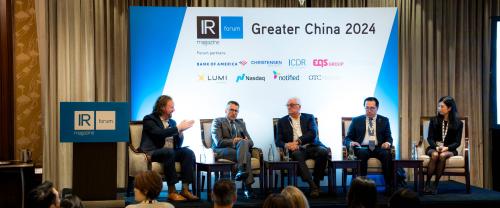You need to go back four decades to find the origins of today's capital markets
Forty years ago, the US Congress passed the Employee Retirement Income Security Act (ERISA). Motivated by workers losing their pension benefits when their employer declared bankruptcy, the legislators created employer-funded insurance and a regulatory framework to encourage expanded retirement benefits.
In the annals of unintended consequences, ERISA deserves a special call-out. While the initial legislation has been amended numerous times and volumes of case law have evolved in subsequent decades, ERISA is arguably a key foundational development of the capital markets. Today’s global, high-speed, indexed and derivative-infused trading environment is a child of ERISA, as is the modern practice of IR.
In 1974, the year ERISA was enacted, new theories of modern finance, from the Capital Asset Pricing Model to Black-Scholes, had not yet fully transformed investment management. Things were slowly changing how risk and reward were measured and how financial assets were managed, traded and priced.
Private (non-government) pension assets in the US totaled $271 bn in 1974. By 2013, the latest year for which data from the Federal Reserve is available, those assets topped $8.1 tn, a healthy 9.1 percent compound growth over 39 years. But the impact on the mutual fund industry was even more profound: over the same period, mutual fund assets grew a phenomenal 16 percent a year, swelling to $11.5 tn.
Increased retirement savings is not the only reason for the explosive growth of mutual funds, but it played a major role. Then the 401K shoe dropped. Subsequent legislative and regulatory interpretations of ERISA led to the widespread adoption of defined contribution 401K plans, beginning in 1982. This was a seismic shift in the retirement landscape that few had anticipated. For the first time, individuals were given greater responsibility for choosing and managing their investments, heightening the general population’s awareness of the stock market and investing. Mutual fund asset growth went into hyperdrive, swelling more than 22 percent between 1982 and 2013.
With people living longer and current interest rates below historic norms, the annual cost to fund future pension payments keeps growing. As firms realized they could shift the risk of funding retirement onto employees, defined contribution plans became the norm and the traditional defined benefits plan became increasingly rare. Since 2012, two dozen major employers have offered to ‘buy out’ the pensions of more than half a million US workers and retirees participating in traditional defined benefits plans, offering lump sum payments the individuals would have to manage.
Mutual funds today hold about 20 percent of US equities, while households hold 37 percent. Pre-ERISA, mutual funds held about 4 percent and individual households 70 percent. Exchange-traded funds, which are growing rapidly and are arguably as IR-immune as index funds, hold 4 percent of corporate equity, about where mutual funds were before their phenomenal four-decade run.
Why does any of this ancient history and actuarial arcana matter to IR? Investor relations, at its heart, is a dialogue between issuers and capital markets. IROs play the role of ambassador, representing their company to the markets, but also hopefully bringing insight and intelligence back into their senior management and board of directors about what the market is thinking and how it may react. The phenomenal growth of institutional assets over the past 40 years has created an ecosystem of markets, trading platforms, consultants, fee structures and institutional arrangements that add complexity and continually shift the IRO playing field. Understanding the drivers behind the capital markets’ evolution can inform the past and help predict the future. It’s what IROs do.
Business and financial journalist Brad Allen is a former IRO and served as NIRI national board chair between 1996 and 1997










